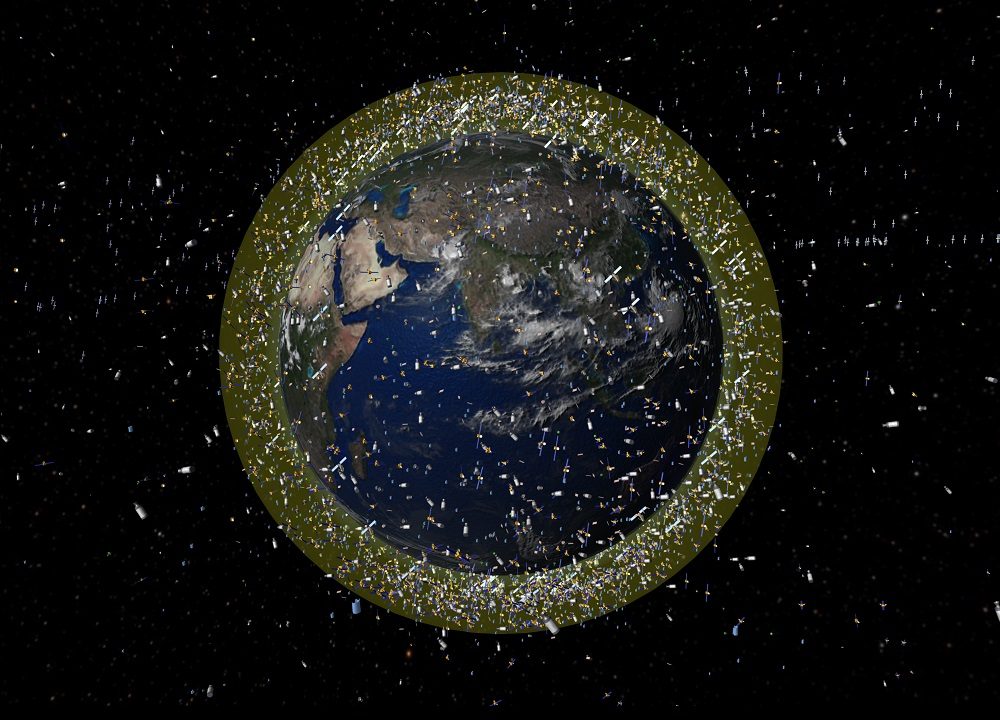
HELSINKI — U.S. space tracking has linked the breakup of Chinese satellite Yunhai-1 (02) to a collision with a small piece of debris from a Russian satellite launch, according to NASA.
The Yunhai-1 (02) satellite was developed by the Shanghai Academy of Spaceflight Technology and launched in September 2019 into a Sun-synchronous orbit with an altitude of around 783 kilometers. It suffered a breakup event on March 18, 2021, creating a number of pieces of debris.
The 18th Space Control Squadron (18 SPCS) of the U.S. Space Force has identified the breakup of the Yunhai 1-02 meteorological spacecraft (2019-063A) last year to be an accidental collision with a small, mission-related debris object (1996-051Q) associated with the Zenit-2 launch vehicle for the deployment of the Russian Cosmos 2333 military signals intelligence satellite in 1996, according to the December 2021 edition of Orbital Debris Quarterly News, a publication of NASA’s Orbital Debris Program Office.
Darren McKnight, senior technical fellow at LeoLabs and member of the International Academy of Astronautics’ Space Debris Committee, told SpaceNews that there is “moderate confidence that it was a collision,” adding that “the event was likely caused by a piece of debris in the 1-10 centimeter size range.”
The breakup of Yunhai-1 (02) is the fifth confirmed accidental collision between two cataloged objects, according to the report. A total of 37 fragments from the collision have been cataloged by the 18 SPCS and as of 1 October 2021, with four of these having reentered the atmosphere.
“I think what’s notable is that we were actually able to figure out that the breakup was caused by a collision with another object,” says Brian Weeden, director of program planning for the Secure World Foundation. “That’s fairly easy to do when the results are catastrophic, as in the case with the [2009] Iridium-Cosmos collision, but there are a lot more smaller scale events that result in minor satellite anomalies and/or release of only a few pieces of debris that are much harder to figure out.”
The largest such event was the 2009 collision between the defunct Russian military spacecraft Kosmos-2251 and the operational Iridium 33 communications satellite. That event generated almost 2,000 pieces of trackable debris.
Suspected collisions can be caused by pieces of debris only a few centimeters in size that are very difficult to consistently or reliably track or maintain in the satellite catalog. Very small debris pieces are sometimes referred to as lethal non-trackable debris.
In the case of Yunhai-1 (02), it appears 18 SPCS was able to track the impactor to some degree but, given its small size and the challenges of tracking it consistently, did not maintain it in the satellite catalog.
Remarkably, despite what would have been a high-velocity, high-energy impact, there is evidence from amateur observations that Yunhai-1 (02) is still operational to some degree.
The Yunhai-1 series of satellites are mainly used for “detecting the atmospheric and marine environment and space environment, as well as disaster control and other scientific experiments”, according to CASC, SAST’s parent company and China’s main space contractor.
No further details have been provided and neither CASC nor SAST have commented on the event or the apparent continuing function of the satellite.
Related
ncG1vNJzZmiroJawprrEsKpnm5%2BifKO%2BxJqirqhdpLNur8eipZqrXa7Cr7TAomRqZWBnerSt056jpaGkmnqttc2knJ1lpKR6tLzAnJxmnJWXv6q%2FjJympaSZqLawuo4%3D